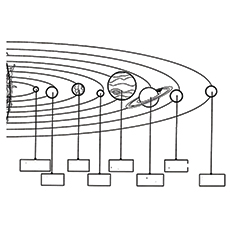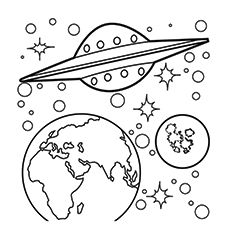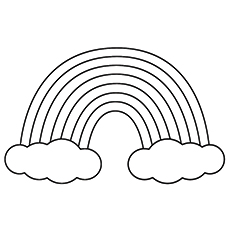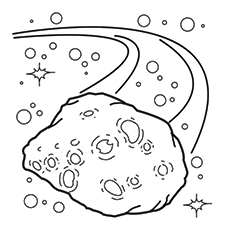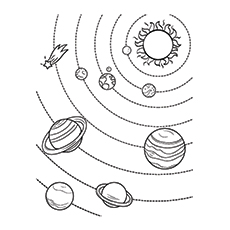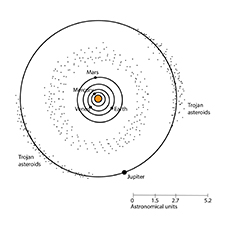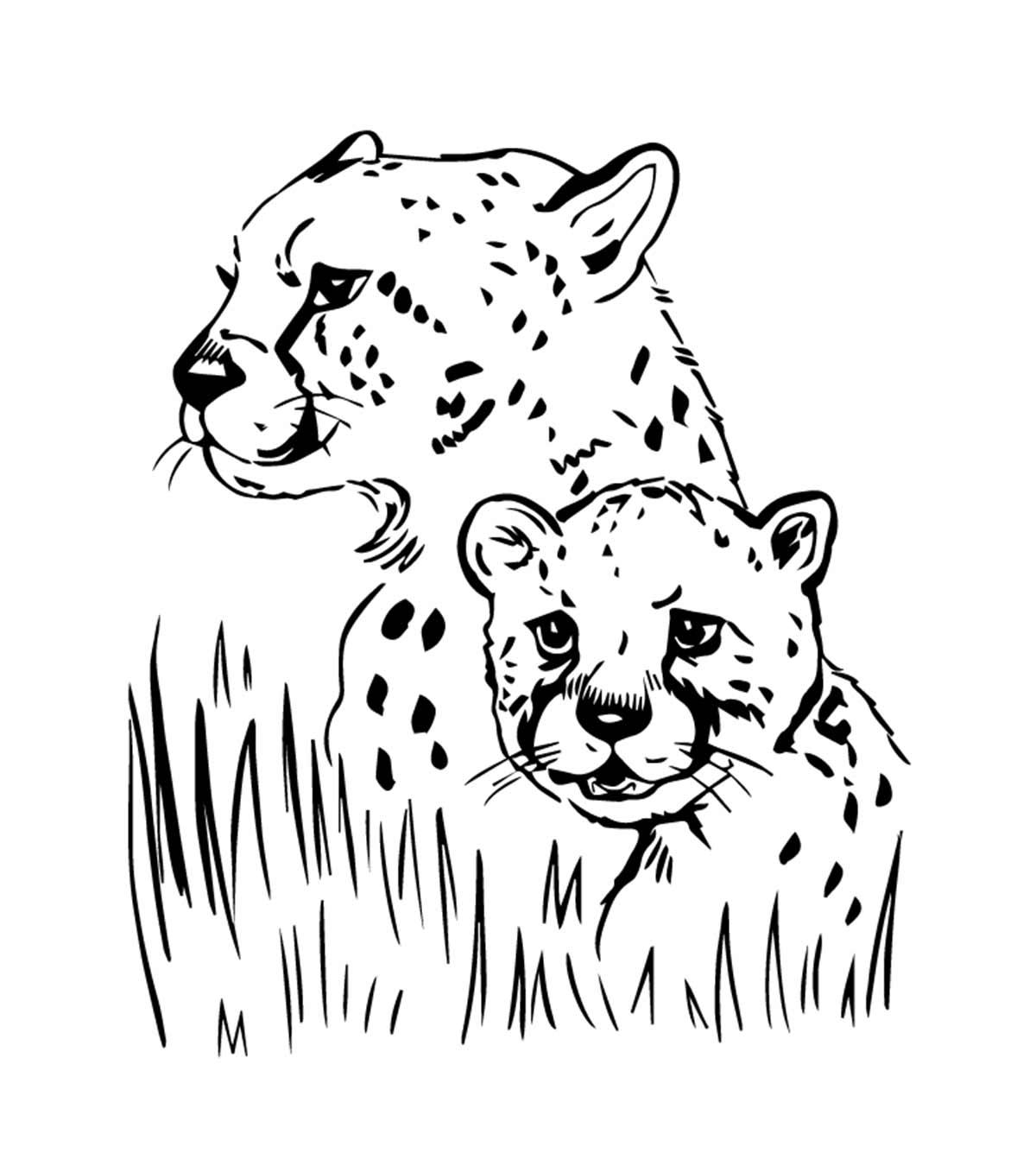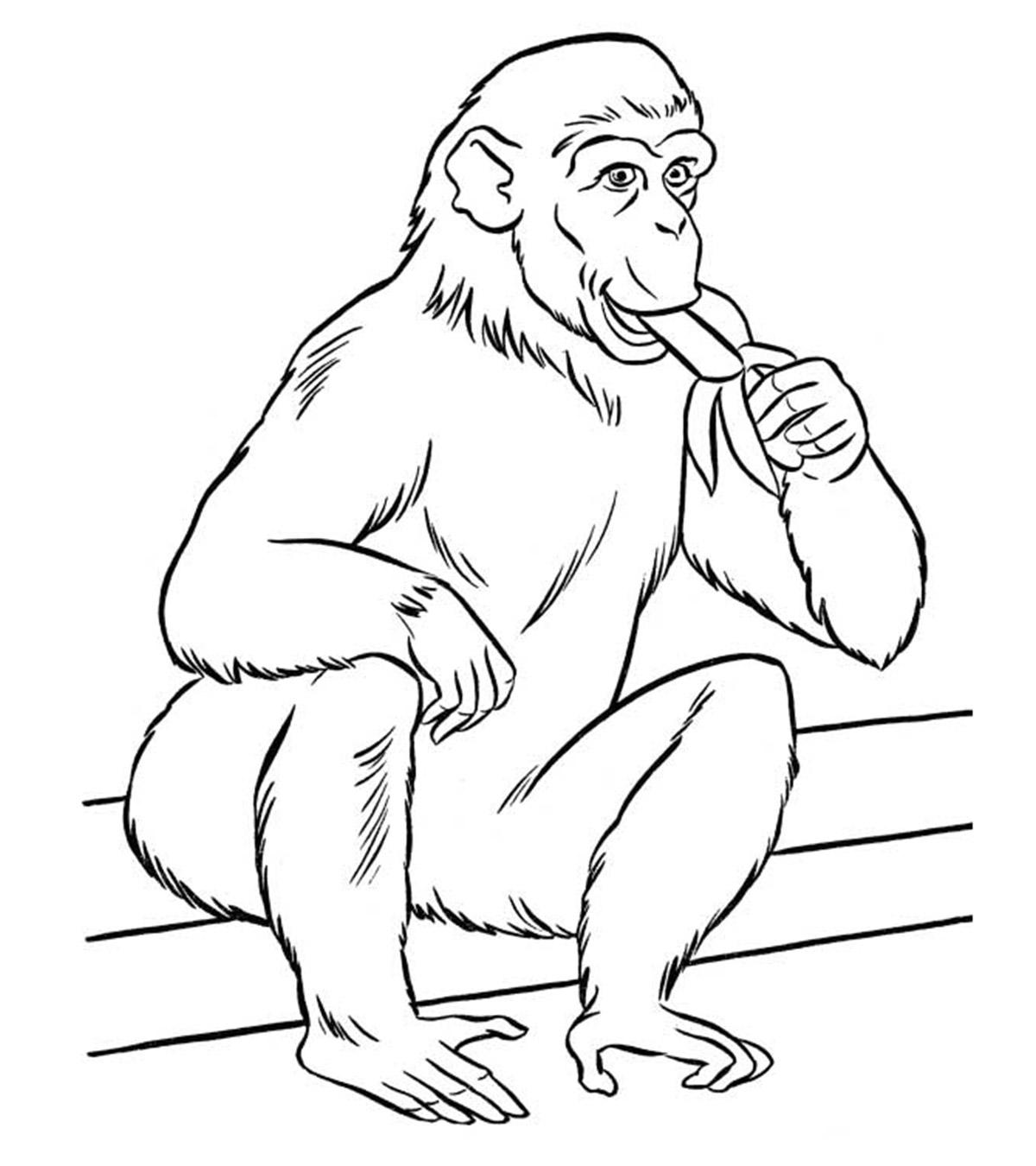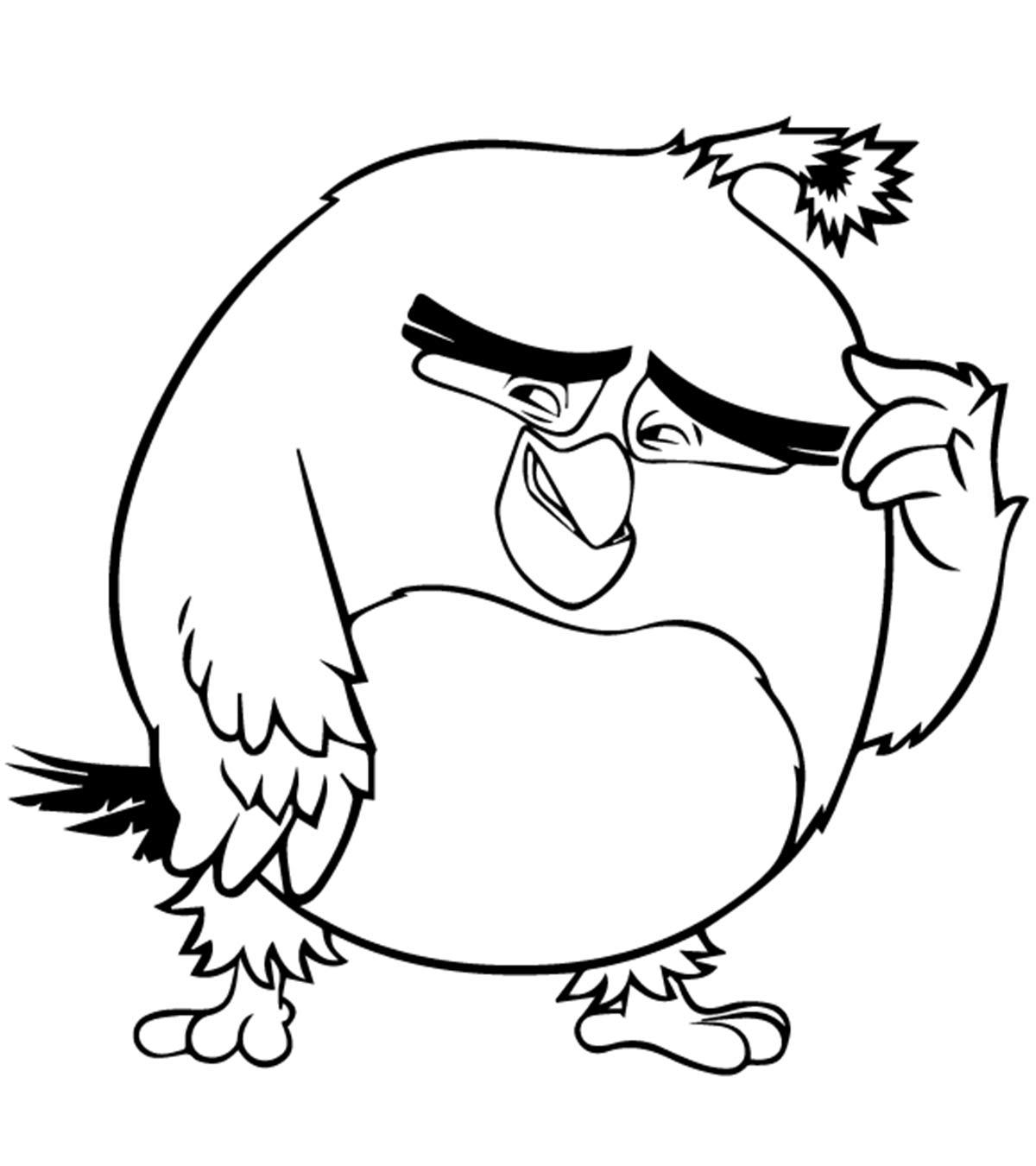Our solar system was formed 4.5 billion years ago due to the collapse of a giant molecular cloud. All the pieces of the solar system were created at around the same time, but it took billions of years for the entire system to develop.
The twinkling stars and the bright moon have always been a subject of interest not just to the scientists, but also to the little ones. Keeping children’s interests in mind, we have compiled a list of 20 solar system coloring pages. Check them out below.
20 Solar System Coloring Pages For Kids
1. Our solar system
Here’s an image of our magnanimous solar system, complete with eight planets, suns, and comets. This coloring page would make study time easier for your little one. Everything in our solar system revolves around the sun, the largest star in the universe. Surprisingly, our solar system is made up of not just the planets, but over 100 worlds, and every bit of it is fascinating. Some stars and moons are even larger than Mercury. Encourage your child to color each planet to help them memorize the order.
2. The sun
Here’s a coloring sheet of the mighty sun, the largest star in the solar system. The sun houses around 98% of all the materials in the solar system. This is because the larger the object, the more gravity it has. Since the sun is greater than anything else, its gravity attracts the objects in the solar system towards it. The objects revolving around the sun try to fly away from it, into the emptiness of space. But when the sun tries to pull them inward, they become trapped halfway in between. Stuck in this puzzle, the planets spend eternity revolving around the sun.
3. Label the planets
Here’s an amazing activity sheet for your little one. It requires your child to label the planets in our solar system. Ask them to label the boxes, following which, they need to color the planets with appropriate colors. The planets would look beautiful if shaded.
4. Jupiter
Launch your child into space with this Jupiter planet printable. The planet Jupiter was named after the Roman god of the same name. It is the biggest planet in our solar system, the fifth planet from the sun, and the third brightest object in the sky after the moon and Venus. It’s so huge that 1300 Earths could fit inside it. Jupiter is entirely a gas planet, and only a tiny bit at its core is solid. It contains gasses such as methane, helium, and water. Jupiter also has giant storms swirling on its surface, the biggest of which is the Great Red Spot.
5. Venus
This coloring page features the brightest planet in the universe. Venus is often called the sister planet to Earth. The surface of this planet had volcanoes, the lava from which formed land, sand, and mountains. When the planet Venus was first formed, it appeared like Earth. It had water, but being closer to the sun, all the water evaporated.
The average temperature of Venus is 850 degrees, which causes a natural greenhouse effect, trapping gasses in the atmosphere and making it a toxic planet for living beings to thrive.
6. Mars
Also called the red planet, Mars is the fourth planet from the sun and the second smallest planet in the universe. It’s named after the Roman god of war, Mars. Mars has a thin atmosphere composed mainly of carbon dioxide.
Mars is the most Earth-like planet in the universe. It is half the diameter of the Earth but has the same amount of dry land. It is also the only planet other than Earth with the right temperature to support life. Mars has two moons, Deimos and Phobos.
7. Neptune
Here’s a coloring page of Neptune, the farthest planet in the solar system. Discovered in 1846, Neptune was the last planet to be found by scientists. This blue planet was seen by the Voyager 2 orbital satellite in 1989. Until then, not much was known about this planet.
Neptune has not one, or two, but 17 moons, the largest ones being Triton and Nereid. This planet also has strong winds, with speeds reaching 1500 miles per hour. The storms on Neptune fade only to return.
8. Saturn
Teach your child about the second largest planet in the solar system with this coloring page. Just like Jupiter, Saturn is a giant planet made up of two elements, hydrogen and helium. This puts the planet in a liquid state. The fast-moving storms float around the outer layer of this planet just as the planet spins in its orbit.
The planet Saturn is most famous for the rings that dance along its orbit. These rings are mostly made up of ice crystals that form clumps and then break apart. Saturn has 57 moons and hundreds of tiny moonlets trapped in its gravitational pull.
9. Uranus
Did you know that Uranus could get as cold as -144 degrees Fahrenheit? Teach your child more about the third largest planet in our solar system with this coloring page. Uranus, the seventh planet in the solar system is a huge, icy planet covered with clouds and encircled by a belt of 11 rings. The blue color of this planet is caused because of the excess level of methane in the atmosphere.
10. Spaceship in space
Take your kid for a trip to the stars with this coloring page. It features a spaceship zooming through the solar system. The activity sheet, with its numerous space staples, will satisfy the galactic adventurer. Can your child guess which planet this astronaut is visiting? Let them guess it as they color. And do not forget to encourage them to use bold and bright colors for this image.
11. Moon
The Moon is Earth’s natural satellite. It has a cold and dry surface studded with craters and strewn with dust and rocks. The farthest side of the moon was observed for the first time by humans in 1959 when the Soviet Luna 3 mission orbited and photographed it. Neil Armstrong and Buzz Aldrin were the first people to walk on the moon. Our moon has hundreds of moons.
12. Halley’s Comet
Here’s a coloring image of Halley’s Comet, the most famous comet to date. It’s a period comet that returns to the vicinity of Earth every 75 years. The last time Halley’s Comet visited us was in 1986, and it is supposed to return in 2061.
Halley’s Comet is named after the renowned astronomer Edmond Halley, who examined the reports of a comet approaching Earth in 1531, 1607, and 1682. He further concluded all these three comets were the same comet returning to the earth repeatedly. He even predicted that the comet would return in 1758. He wasn’t alive to witness the comet’s arrival again, but his discovery led to it being named after him.
13. Asteroid
Asteroids are large rocks that orbit the sun. They are usually made up of metal and rock and are found in the asteroid belt between Mars and Jupiter. The size of an asteroid varies from about ½ miles to hundreds of miles and just a few of them approach the sun. The asteroids are also called planetoids or minor planets.
14. Asteroid belt
A majority of asteroids in our solar system are found in the Asteroid Belt, a region beyond Mars. This donut-shaped concentration of asteroids orbits the sun between the orbits of Jupiter and Mars. It is close to Mars’ orbit, between 186 and 370 million miles from the sun. The largest asteroids in the belt are Vesta, Pallas, Ceres, and Hygeia. These asteroids contain half the mass of the entire belt.
15. Comet
Comets are huge snowballs found in the farthest parts of the solar system. Made of ice dust and chunks of rock, these comets orbit around the Sun. Some comets also come into the inner solar system every few hundred years. The long tail of dust and gas from the comet always points away from the sun due to the force of the solar wind. The tail can be over 250 million kilometers long. The comets are visible only when they are near the sun in their eccentric orbits.
16. Satellite
Here’s a coloring image of the International Space Station, the largest artificial satellite orbiting Earth. This satellite was developed mainly by the University of Tartu to carry out a tether deployment experiment in low Earth orbit. Satellites can be either natural or artificial. The natural satellites of the solar system are the Galilean moons of Jupiter, Titan, Saturn’s moon, Earth’s moon, and Triton, Neptune’s captured satellite. NASA has more than a dozen earth science satellites in orbit. These satellites help study the land, the atmosphere, and oceans.
17. Earth
Here’s a coloring page of our beloved planet, Earth. Earth is the third planet from the sun. It has water on the surface and oxygen that we can breathe. It is mainly made up of rock. From space, the Earth looks like a blue ball with brown and green land and white clouds. The temperature of the earth can be either hot or cold. It is the only known planet that supports life.
18. The nine planets
Here’s a coloring page of the eight planets–Mercury, Venus, Earth, Mars, Jupiter, Saturn, Uranus, and Neptune. Show your child the picture of the planets and then ask them to color accordingly. As an activity, you can check out the planets with a small binocular and telescope at night or head to a private observatory near you
19. Pluto
Here’s a coloring page of Pluto, the largest dwarf planet in our solar system. Pluto was a mystery to most of us because it was never explored by a spacecraft. On 14th July 2015, New Horizons Spacecraft reached Pluto, which gave us the information that it is composed of 98% nitrogen ice. This dwarf planet orbits around Neptune. Do you know how Pluto received its name? In Roman Mythology, Pluto was the underworld god. The dwarf planet received its name because of it being far away from the sun. It has five moons–Charon, Nix, Hydra, Kerberos, and Styx.
20. Mercury
The tiny planet you see near the sun in this coloring page is Mercury, the second smallest planet in our solar system. Mercury is named after the Roman god Mercury, the messenger of the gods. The diameter of mercury is one-third the size of Earth’s. It is one of the four terrestrial planets, meaning it mostly comprises rock. The crust of Mercury is made of stone, the mantle is made of silicates, and the core is iron. It takes 176 Earth days for Mercury to complete its rotation and 88 days to orbit once around the sun. So one day of Mercury would last two years.
Along with the images of the planets and the dwarf planet, Pluto, these solar system coloring pages have the moon, a spaceship, Halley’s Comet, and more. So in addition to playing with colors and filling the images with proper shades, your child will love coloring each page and learn more about every major body that makes up our solar system. Download these pages and let your child’s imagination run wild.
Community Experiences
Join the conversation and become a part of our nurturing community! Share your stories, experiences, and insights to connect with fellow parents.



